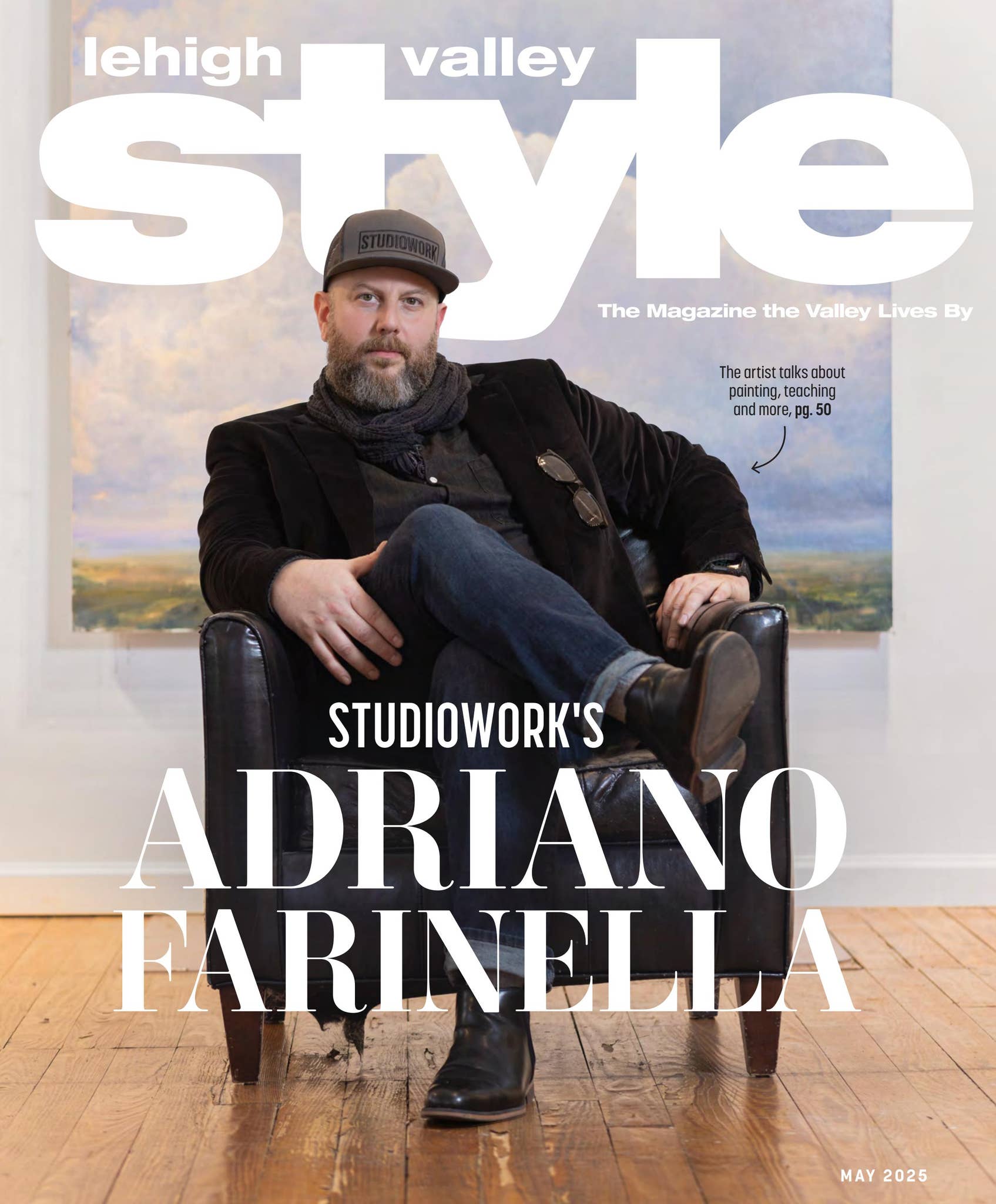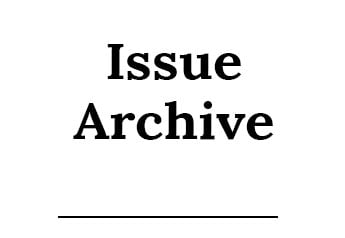Rigo Peralta is not an Allentown native, but he's been living and working there prior to the start of the ongoing downtown renaissance that's making the Queen City a desirable destination once again. And the changes that continue to take shape in his neighborhood and beyond—deindustrialization and the disappearance of factories that were once the city's lifeblood—are reflected in his art. His bold, colorful paintings, he says, represent the “push and pull between humanity and machinery,” compositions where “classic meets abstract.”
There's also a distinct Caribbean influence that recalls Peralta's roots. He was born in the city of San José de las Matas in the Dominican Republic. He knew he had a future in art when, as a middle school student, he saw a teacher sketching a picture of a horse. “I told him,
‘I would like to do that,'” Peralta recalls. The teacher let him keep the sketch, and encouraged him to try his hand at making one of his own. Upon viewing the finished product, the teacher told Peralta that he had a talent he should cultivate. Peralta heeded the advice; he says he was selling oil paintings that depicted landscapes and still life scenes by the time he was 14 years old. His mother was immediately supportive of his efforts, and told him she thought he might be a reincarnation of one of the long-departed artistic greats; his father, though, a military man, was a tougher sell at first.
Peralta would go on to study at the National Academy of Fine Arts in Santiago and take a job as an art instructor at an elementary school before emigrating to the United States in 1989 to join his mother in Brooklyn. Peralta says it took some time to get acclimated to his new surroundings. “It was difficult for me—the transition—without knowing the language. I didn't have a connection with anything to do with art.”
Eventually, Peralta began to make inroads in the art community. He opened a studio first on the Lower East Side, and then in Brooklyn's now-trendy Williamsburg neighborhood. He recalls seeing old shuttered factories being cleared out and converted into new residential and commercial buildings; in one instance, discarded sewing machines had been piled up outside, ready for the trash truck. It's a scene that has stuck with Peralta. “I said, ‘Wow, this is the end of the Industrial Revolution.'” That theme would come to play a prominent role in his work.
It was also around the same time that Peralta made a decision that would impact the rest of his life. He had a wife and two young kids, and was working as a bus driver for a hospital in Brooklyn while still squeezing in time for his art whenever he could. But Peralta knew that to truly be an artist, he had to truly be an artist—full-time. He announced his intentions to his wife, Maria, who fully supported his resolve. Peralta never looked back. “From that time into now, I have been living as an artist,” he says.

A visit to a cousin in the Lehigh Valley around 2004 prompted another bold move—Peralta decided to leave New York City and move his family to Allentown. “I wanted to slow down,” he explains. Although certainly quieter than the city life he was accustomed to in Brooklyn, the area, he says, appealed to him because it shares some similarities with his hometown in the Dominican Republic—a valley surrounded by mountains and rivers. He worked out of a studio in Bethlehem's Banana Factory for about seven years. Peralta says he once again found inspiration for his work in the changes happening around him—this time, in Bethlehem's dwindling manufacturing output, manifested in the silent blast furnaces of Bethlehem Steel.
Peralta opened his current studio and gallery at 12th and Linden streets in Allentown in 2012. At the time, Peralta says, his was one of the only art studios in the area, but it was important to him to be present professionally in the neighborhood where his children had grown up, and where he felt a sense of community.
He recalls with fondness the time when a woman stopped by and thanked him for his efforts, calling his studio a “flower” in the neighborhood. Over the years, Peralta has hosted a number of free events in the space, including shows and installations of his own paintings, as well as the work of artists from around the world.
After using oil paints for many years, Peralta switched to acrylics about six years ago; he says he's able to achieve a greater richness in his paintings. It's not uncommon for him to be working on several pieces at once. His paintings take him anywhere from a couple of days to a couple of months to complete. “Sometimes everything is falling into place,” he explains. “You feel a connection with a painting, and you just finish it.” The process, he says, is very much dictated by the painting itself as it begins to take shape. “A lot of people think my work is preconceived ahead of time, but it's the opposite. Everything is very spontaneous, accidental.” The image often starts as an abstract amalgam of many colors before the mechanical forms begin to take shape and assert themselves. “This final product I refer to as conditioned surrealism,” Peralta say. “That is, an awakening of the subconscious as it invites you to explore a series of hidden elements on the canvas that can alter your perception over and over with each viewing.”
Over the years, the accolades have piled up for Peralta. Among the honors: an Arts Ovation Award from the Allentown Arts Commission, and the Air Products Foundation Award. In 2003, while serving as director of fine arts at the Casa De La Cultura Dominicana (Dominican Culture House) in Manhattan, he was invited to the White House by then-President George H.W. Bush. Peralta says they feasted on a traditional Dominican breakfast (boiled plantains mixed with eggs, cheese and salami) and celebrated the art of the island.
In addition, Peralta has had solo exhibitions in his native Dominican Republic, as well as in New York City, Costa Rica and in the Lehigh Valley at places like Monsoon Gallery in Bethlehem, Allentown's Baum School of Art and the Allentown Art Museum. In 2016, the Allentown Art Museum commissioned him to paint a mural that was displayed in the vestibule for several years; he also has a piece in the modern gallery—a portrait of his grandmother smoking a cigar.
But perhaps the greatest triumph of all is Peralta's persistence in fulfilling what he sees as his destiny, a journey that started decades ago and hundreds of miles away with a simple sketch of a horse in the Dominican Republic.
“I don't see [art] as something I have to do, like work,” he says. “It's what I live for.”















